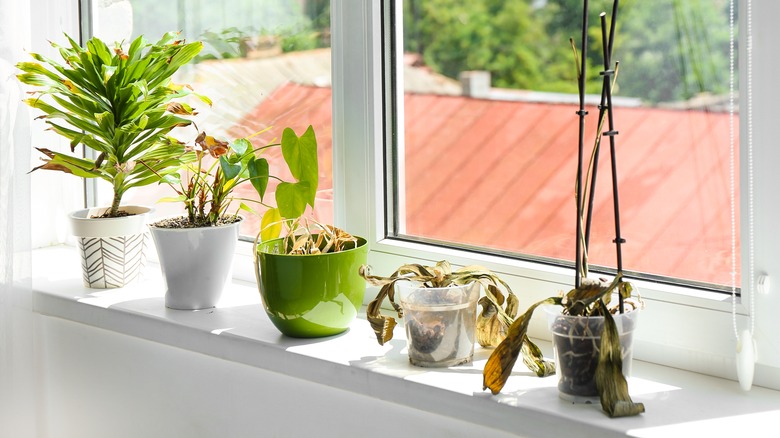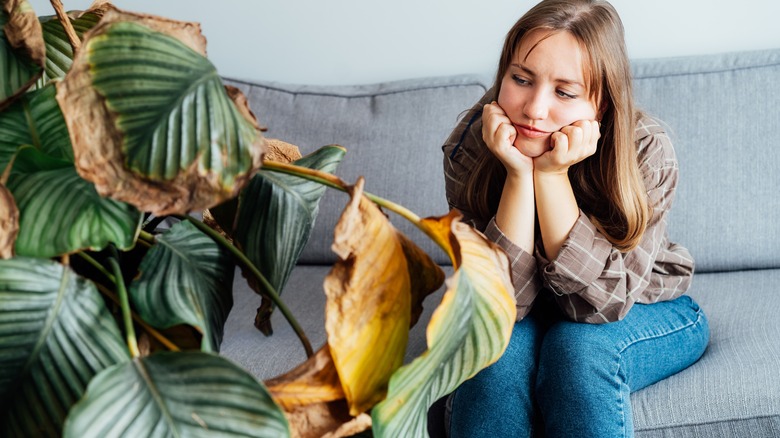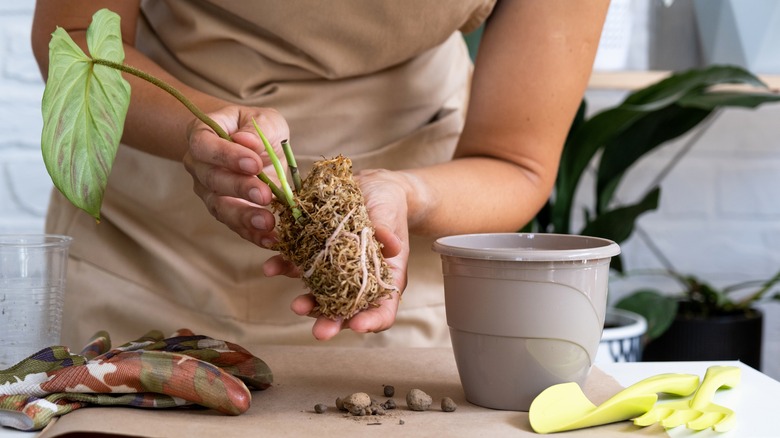The 'Windowsill' Plant Trend You Should Leave Behind In 2023
Looking back on the first few months of the Covid-19 quarantine feels like a fever dream today. As we lay on our living room couches for weeks on end, we shielded our eyes from the doom and gloom of the TV and found comfort in our TikTok feeds. For many people, those "for you" pages were flooded with videos of houseplant collections and biophilic living rooms. It's safe to say that many of us were influenced, as demand for houseplants shot up about 18% during the pandemic, and over 66% of households today own at least one plant (via Garden Pals). But what happened when we eventually stepped out from our Covid caves, blinking in the sunlight? Formerly beloved "plant babies" were banished to the windowsill and left to fend for themselves, a saddening trend we're ready to leave behind in 2023.
This doesn't mean that windows are suddenly an unfashionable place for plants, but that we should all reconsider how we treat houseplants. Houseplant hoarding has become all too common, with too many plants ending up crispy, droopy, and dumped in the backyard. Dust off your windowsill; here's how we're moving forward with our green friends this year and what you can do to revive plants hanging on by a stem.
The trouble with too many plants
The idea of a luscious, green, plant-filled room might seem nice, but in reality, it's difficult to achieve for a lot of people. The more plants you have, the harder it becomes to keep track of each plant's individual needs. We tend to think of them as trendy home décor, but houseplants are living beings that deserve some degree of respect. Plus, taking care of your plants might just bring some good karma and health back your way. Wilted and dying plants are bad for feng shui, draining the lively energy from your home and blocking good fortune, but green and thriving plants can increase your wealth and generate positive energy. Healthy plants are also good for you, as they absorb and remove pollutants from indoor air.
In other words, it's much better to have one thriving plant than ten half-dead ones. Owning a whole jungle may have been popular a few years ago, but moving forward, we're leaning towards committing to our plants and understanding their care needs before bringing them home. You may desperately want a fiddle leaf fig, but if your apartment only has one small window, you'll be much better off choosing low light plants like a golden pothos or snake plant.
Reviving and recommitting to your plants
Plants are amazingly resilient, and with a little T.L.C. your windowsill plant babies can bounce right back. Start by taking the time to research each variety and determine what it needs in terms of sunlight, water, soil nutrients, and room temperature. It may help to create a houseplant journal or pot labels for quick reference. Once you've established their needs, trim away any dead or dying leaves and check the soil. If it looks dry and compacted, or the plant hasn't grown any new leaves in the last few months, it's time to repot. Carefully transfer these plants to a pot about 1 to 2 inches larger than their original containers and add fresh soil.
Rearranging the plants in your home can ensure that nature works with you, rather than against you. Some plants will thrive in the bright light of a south-facing window, while others would prefer to be in a shady area across the room. Once they're settled into their new spot, give all your plants a good drink of water and check that each pot has proper drainage. To keep up with future plant maintenance, it may help to schedule watering days in groups (e.g. Group A plants once per week and Group B plants every other day). Also set aside one day per month to check all your plants for disease, trim away decaying foliage, fertilize, and repot if necessary.


